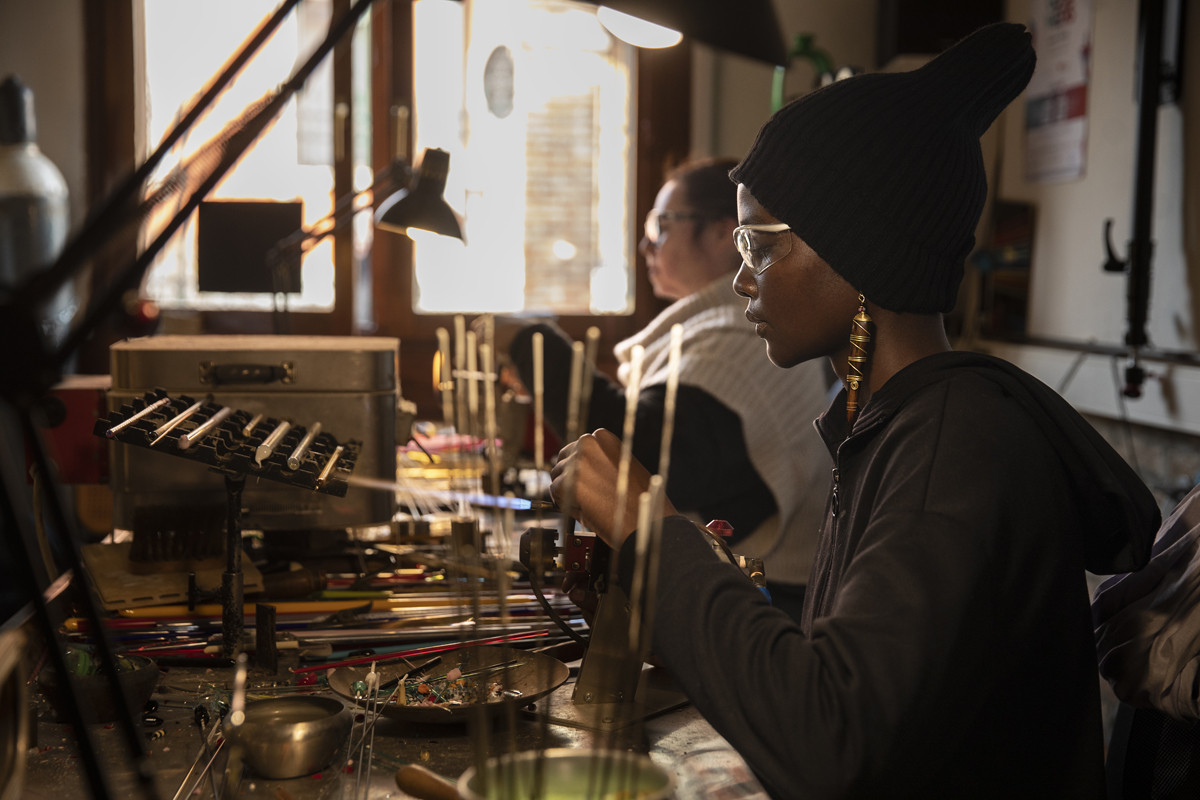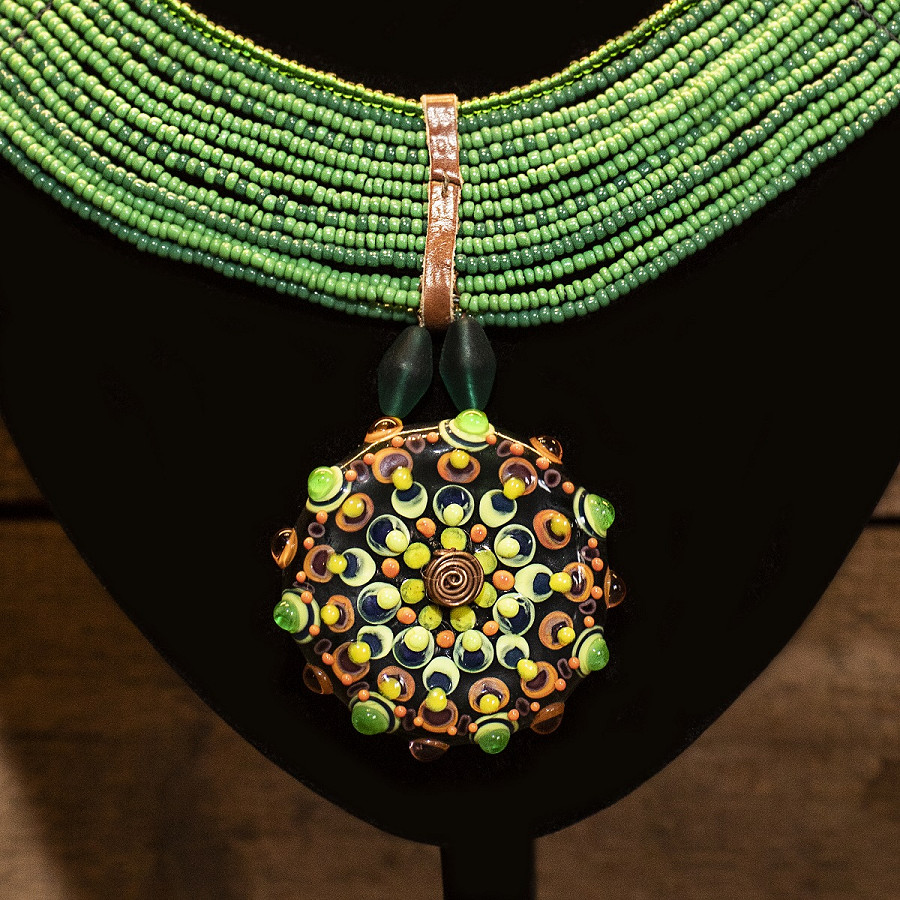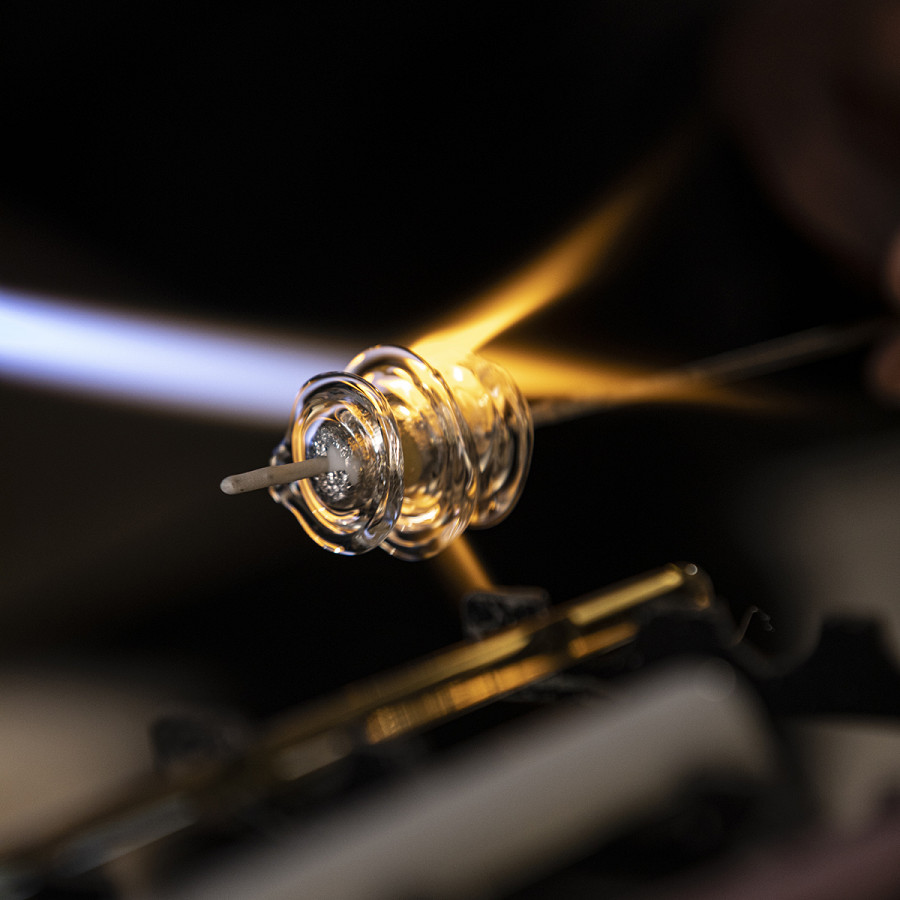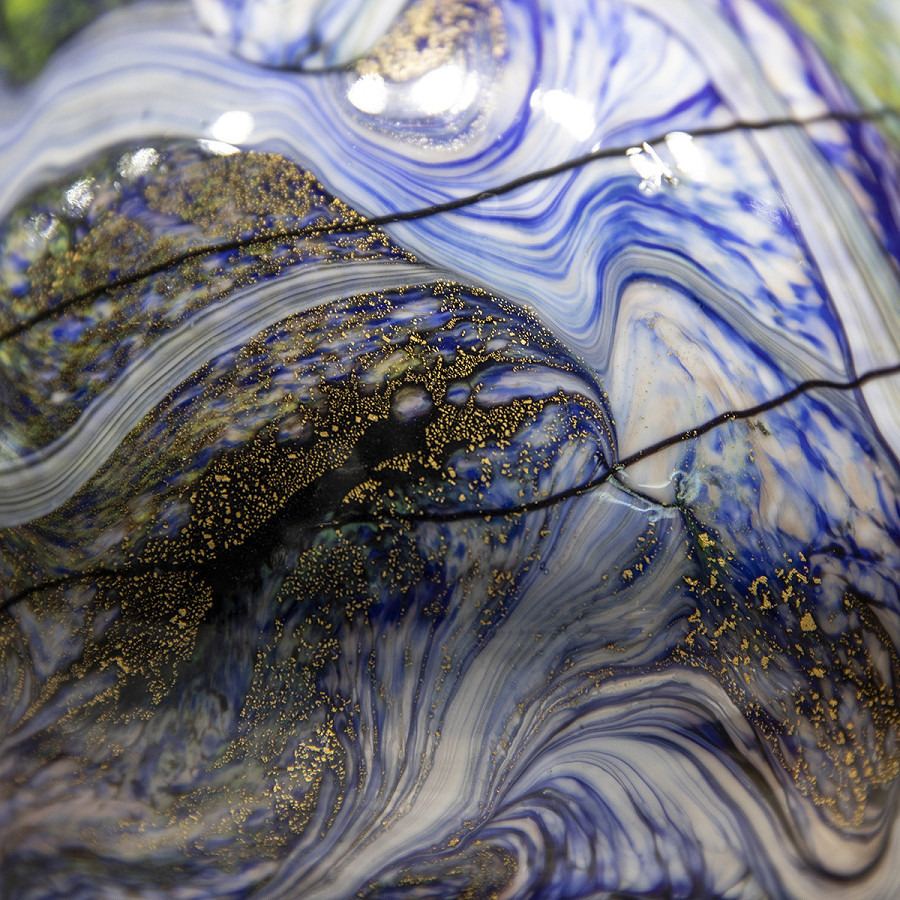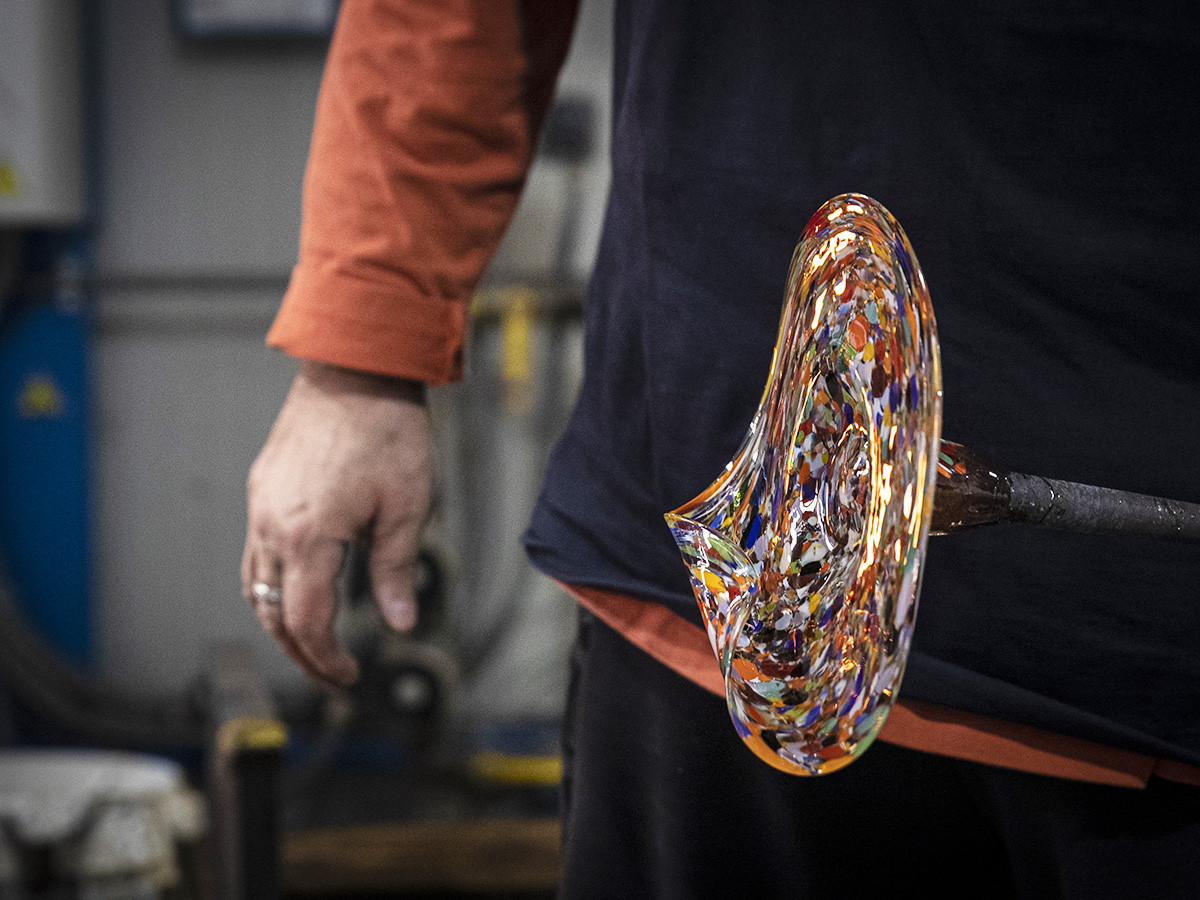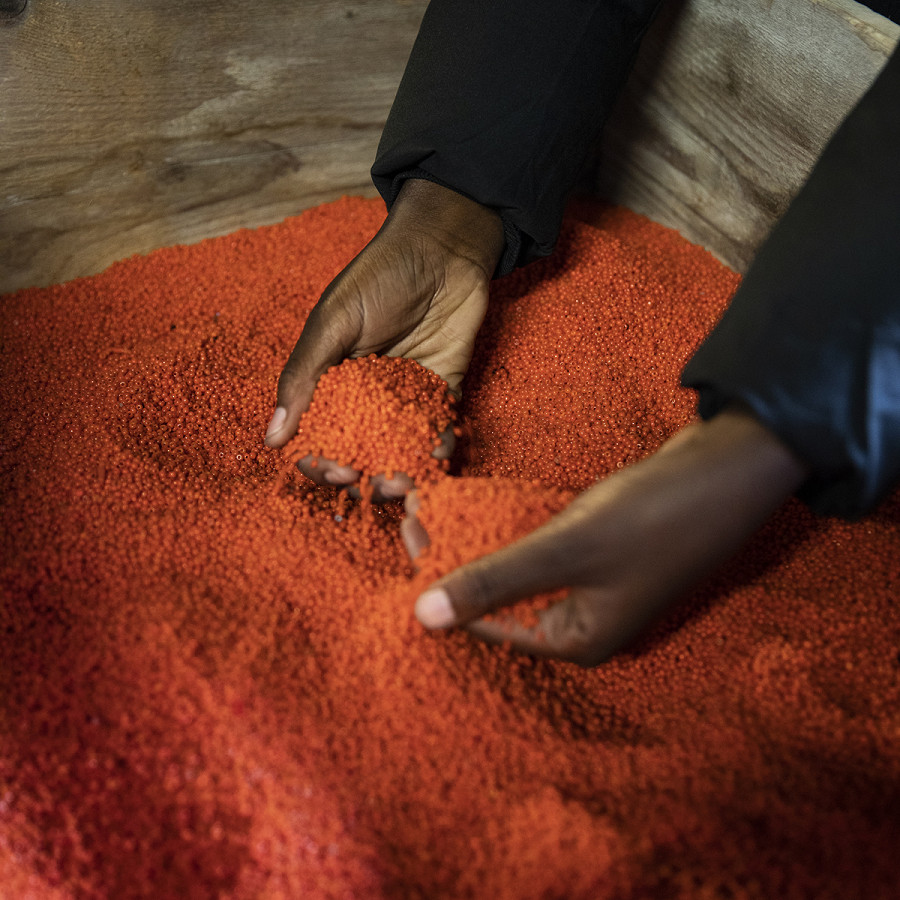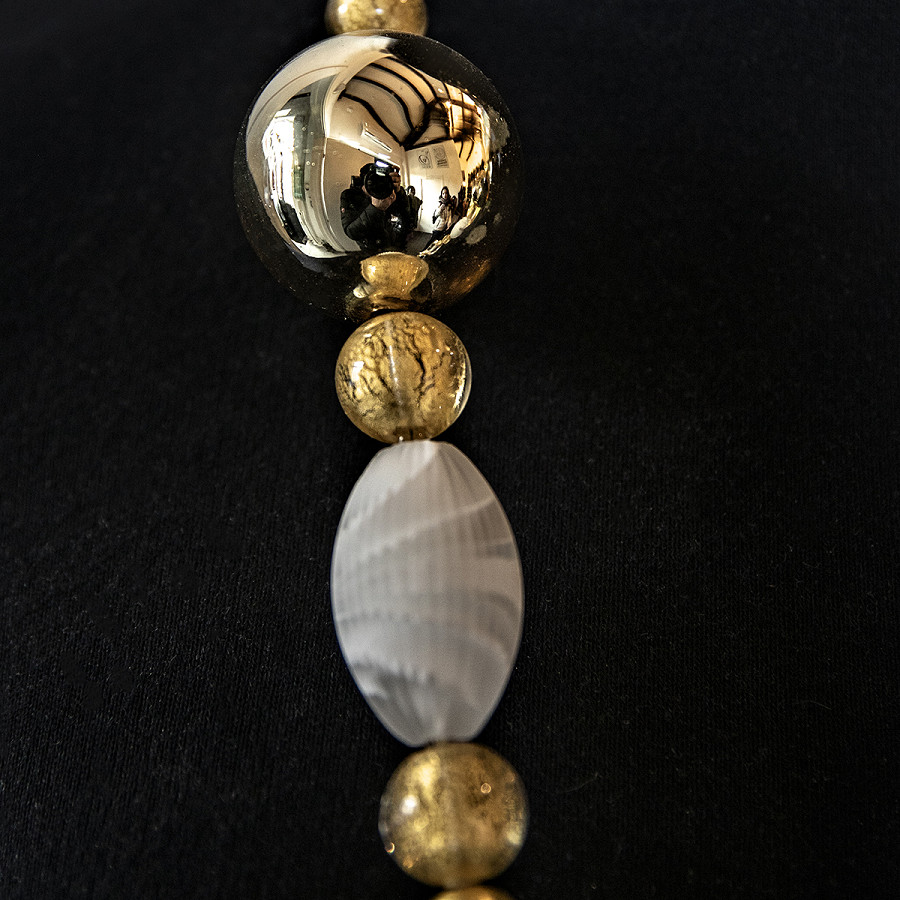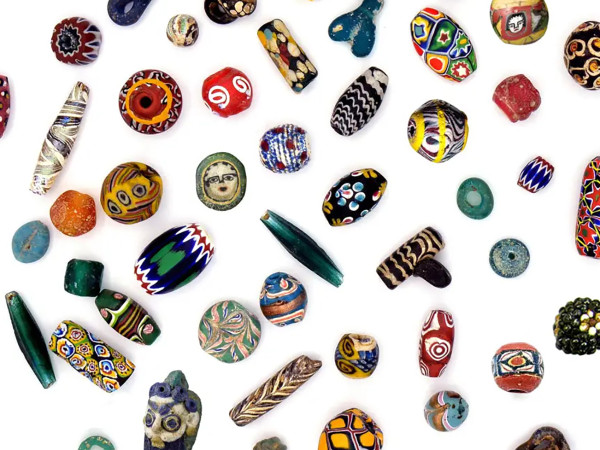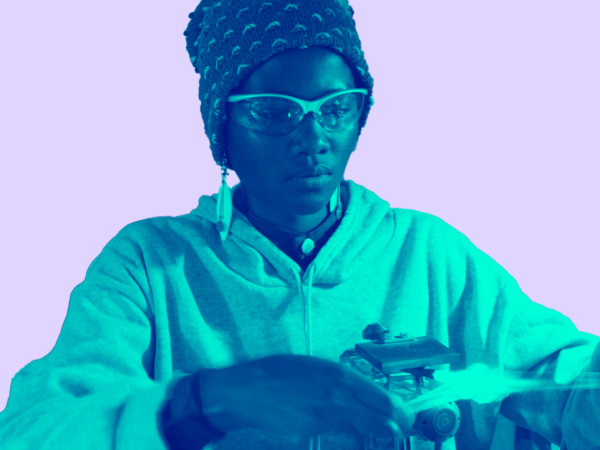Ecco come ho imparato a fare perle con decorazioni di metallo
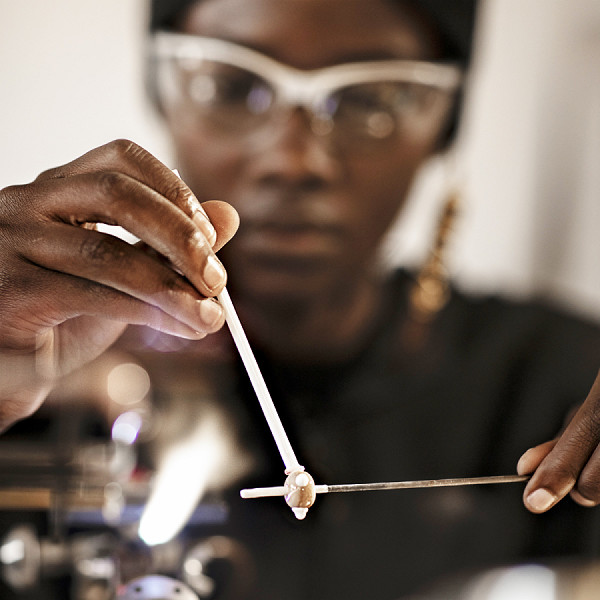
- Indice dei contenuti
- Venetian beads: glass, flame and passion
Al visitatore di Murano, distratto dalle mille lucciole dei negozi, spesso sfugge la creatività e la passione che gli artigiani del vetro infondono nel porre in essere le loro creazioni. Siano esse lavorate alla fornace o davanti alla torcia per creare le perle al lume. Gesti semplici, decisi e leggeri, davanti al fuoco che consente loro di dare forma alla loro creatività: vetro e fuoco, e l’immaginazione prende forma e va oltre la vita di chi ha immaginato.
Il video preparato a suo tempo da francesi e veneziani per fare dichiarare l’arte delle perle di vetro Patrimonio immateriale dell’Umanità Unesco ripete 2 frasi: la durabilità del vetro e la fragilità della conoscenza, la durabilità del vetro e la vitalità della conoscenza.
Mi sono chiesto spesso cosa intendessero dire gli autori con la fragilità della conoscenza, poi è bastato vedere i vetrai veneziani al lavoro, i loro gesti, a volte ascoltando, come Igor Baldi, la musica di Vivaldi: gesti sapienti che portano a creare l’impensabile, sia essa la testa di un soldato romano o un piatto di vetro, da quella che sembrava una semplice bacchetta o una palla infiammata.
Fragilità di un sapere imparato con gli occhi e fatto proprio con la manualità e la ripetizione dei gesti sino a giungere alla perfezione. Sapere che non puoi scrivere in un libro o descrivere un video tutorial, devi provarlo con le tue mani, guardando a tutto tondo il muoversi delle mani di chi ha imparato prima di te e la distanza che devi mantenere dalla fiamma e come erogare la stessa.
È come la cucina delle nonne che ti insegnavano le ricette con “il quanto basta” o “vai a occhio”, una conoscenza non scritta né scrivibile che porta al capolavoro. Una conoscenza legata alla singola persona e, per questo, fragile perché si perde con la vita dell’artista, se qualcun altro non ha appreso da lui/lei.
Da qui, il desiderio di tramandare attraverso il passaggio di conoscenza alle nuove generazioni, nel solco delle tradizioni locali da genitori a figli, ma anche nel confronto con altre culture. Perché le tradizioni non durano se non si innovano e non si confrontano.
Da qui, il senso dell’altra frase, la durabilità del vetro e la vitalità del sapere. Vitalità che è sempre aperta al nuovo e al confronto, fuori dai confini nazionali e così giungere al più antico ma anche il più giovane e vivace dei continenti: l’Africa e i suoi artisti. Il progetto va avanti e la fashion designer keniana Sandra Hawi continua a imparare dalla muranese Alessia Fuga.
Un incontro emblematicamente rappresentato dall’opera della stessa Alessia Fuga: una collana di perle del popolo Masai con il ciondolo centrale fatto di perle a lume veneziane. Tradizione, fusione di culture e futuro e così i sogni vanno oltre la luce del mattino.
Venetian beads: glass, flame and passion
For the visitor to Murano, distracted by the thousands of fireflies in the shops, the creativity and passion that the glass artisans instill in putting their creations into being, often escape, whether they are worked in the furnace or in front of the torch to create pearls by lamp. Simple, decisive and light gestures, in front of the fire that allows them to give shape to their creativity: glass and fire, and the imagination takes shape and goes beyond the life of the ones who imagined.
The video prepared at the time by the French and Venetians to have the art of glass beads declared a Unesco World Intangible Heritage repeats 2 sentences: the durability of glass and the fragility of knowledge, the durability of glass and the vitality of knowledge.
I have often wondered what the authors meant by the fragility of knowledge, then it was enough to see the Venetian glassmakers at work, their gestures, sometimes listening, like Igor Baldi, to the music of Vivaldi: skillful gestures that lead to the creation of the unthinkable, be it the head of a Roman soldier or a glass plate from what looked like a simple rod or a flaming ball.
Fragility of a knowledge learned with the eyes and adopted with manual skill and the repetition of gestures until it reaches perfection. Knowing that you cannot write in a book or describe a video tutorial, you have to try it with your hands, looking at the movement of the hands of those who have learned before you and the distance you have to keep from the flame and how to dispense it.
It is like the kitchen of the grandmothers who taught you the recipes with “quantum sufficit” or “go to the eye”, an unwritten or unwritable knowledge that leads to the masterpiece.
A knowledge linked to the single man and therefore fragile because it is lost with the life of the artist, if someone else has not learned from him/her.
Hence, the desire to pass on through the passage of knowledge to the new generations, in the wake of local traditions from parents to children, but also in comparison with other cultures. Because traditions do not last if they do not innovate and compare.
Hence, the meaning of the other sentence, the durability of glass and the vitality of knowledge. Vitality that is always open to the new and to comparison, beyond national borders and thus reaching the oldest but also the youngest and liveliest of continents: Africa and its artists. The project goes ahead and the Kenyan fashion designer Sandra Hawi continues to learn from the glass artist Alessia Fuga of Murano.
An encounter emblematically represented by the work of Alessia Fuga herself: a pearl necklace of the Maasai people with the central pendant made of Venetian lamp work pearl. Tradition, fusion of cultures and future and so dreams go beyond the morning light.



